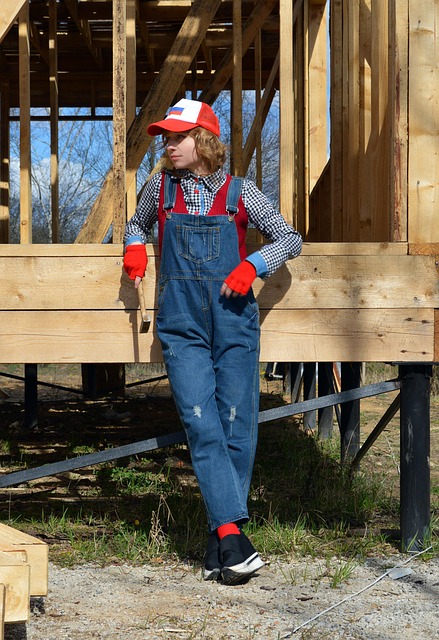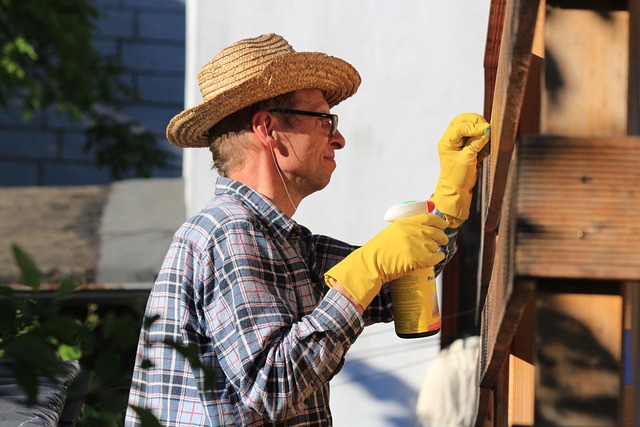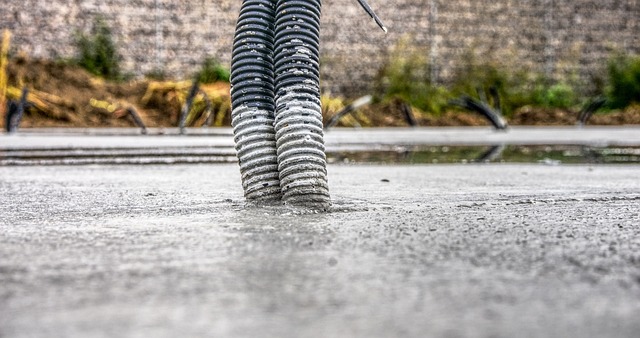Residential concrete foundation inspections are vital for long-term home safety and value. Early detection of cracks, uneven floors, moisture intrusion, and other issues prevents minor repairs from becoming major, costly problems. Regular evaluations using advanced tools and techniques ensure structural integrity, saving money and offering peace of mind. Proactive measures like crack sealing and proper drainage maintenance further safeguard homes from foundation damage.
Concrete foundation inspection is a crucial aspect of maintaining and safeguarding your home’s structural integrity. This comprehensive guide delves into the intricacies of residential concrete foundation evaluation, highlighting its significance in identifying potential issues early on. We explore common problems, from cracks to uneven settling, offering insights into both non-invasive and invasive inspection methods. The article navigates through essential tools, interpretation of reports, and the importance of professional repair services for effective solutions. By understanding these aspects, homeowners can ensure their homes’ foundations remain robust and secure, mitigating costly repairs in the long run.
Understanding Residential Concrete Foundation Inspection: A Comprehensive Overview

Residential concrete foundation inspection is a critical process that involves a thorough evaluation of a home’s underground structural support system. It goes beyond a surface check, delving into the integrity and stability of the foundation, which is vital for ensuring the long-term safety and value of a residential property. This inspection process encompasses various elements, from assessing concrete quality and construction techniques to identifying potential signs of damage or decay.
The primary goal is to detect any issues that might require residential foundation repair. Common problems include cracks in the foundation walls, uneven floors, sticky doors or windows, and visible gaps around pipes or electrical lines. Through meticulous examination, professionals can pinpoint these issues early on, preventing minor problems from escalating into costly and complex repairs. It’s a proactive approach to maintaining a home’s structural integrity and peace of mind for homeowners.
The Significance of Regular Foundation Evaluations for Homes

Regular foundation evaluations are essential components of home maintenance, often overlooked but critical for ensuring structural integrity and preventing costly repairs in the long run. A residential foundation repair can be a complex and expensive process, making proactive measures like routine inspections invaluable. By identifying potential issues early on, homeowners can avoid major crises that could compromise the safety and value of their properties.
These evaluations help detect common problems such as cracks, settlement, or moisture intrusion, allowing for timely intervention. Addressing these concerns before they escalate not only saves money but also safeguards against further damage to the foundation and the structure it supports. Regular checks are a wise investment for any homeowner, providing peace of mind and safeguarding their most valuable asset—their home.
Identifying Common Issues in Concrete Foundations

Concrete foundations, while sturdy, are not immune to issues over time. Identifying common problems early on is crucial for effective residential foundation repair. One of the most visible signs to look out for is cracks in the concrete, which can be caused by a range of factors such as settlement, shifting soil, or improper construction. These cracks may appear as hairline fractures or wider gaps and can indicate structural damage. Another frequent issue is uneven floors or walls, suggesting an imbalance in the foundation that could lead to more severe problems if left unaddressed.
Moisture intrusion is another common problem, often resulting in efflorescence (a white powdery substance) on the surface of the concrete. This can be a sign of water seepage and potential damage to the rebar and concrete matrix. Proper drainage systems and waterproofing measures are essential to prevent this issue. Additionally, bulging or bowing walls may indicate excessive moisture pressure or soil movement, highlighting the need for professional evaluation and potential residential foundation repair solutions.
Non-Invasive vs Invasive Inspection Techniques: Which is Better?

When it comes to inspecting concrete foundations, there are two primary approaches: non-invasive and invasive techniques. Non-invasive methods, such as visual inspections, thermal imaging, and ground-penetrating radar (GPR), offer a less disruptive way to assess foundation health. These tools enable professionals to detect cracks, moisture intrusion, and other issues without causing further damage or disturbing the structure. This is particularly advantageous for residential foundation repair, where minimizing disruption is key to maintaining a comfortable living space during the inspection process.
Invasive techniques, on the other hand, involve drilling, digging, or cutting into the foundation to gain direct access to its internal components. While these methods provide detailed and precise data, they can be more destructive and may cause temporary instability in the structure. For minor inspections or routine maintenance, non-invasive techniques are often preferred due to their cost-effectiveness, minimal disruption, and ability to identify potential issues early on, thereby preventing the need for extensive residential foundation repair later on.
Tools and Technologies Used in Foundation Inspection Process

The inspection of concrete foundations involves a range of tools and technologies designed to assess structural integrity accurately. Professionals utilize advanced equipment such as moisture meters, thermal imaging cameras, and non-destructive testing (NDT) methods like ultrasound and ground-penetrating radar (GPR). These tools help detect potential issues like cracks, moisture intrusion, or uneven settling, which are common in residential foundation repair scenarios.
Moisture meters play a crucial role in identifying water seepage, while thermal imaging cameras visualize temperature variations indicating potential heating problems or leaks. GPR and ultrasound technologies penetrate the concrete to reveal internal structural defects without causing damage. These advanced tools enable inspectors to pinpoint issues early on, facilitating proactive Residential Foundation Repair measures before major complications arise.
How to Prepare for a Residential Foundation Repair Assessment

Before scheduling a residential foundation repair assessment, there are several key steps to prepare. First, conduct a thorough inspection of your home’s exterior and interior, paying close attention to any signs of structural damage or uneven floors. Take note of cracks in walls, ceilings, or foundations, as these could indicate potential issues. Additionally, review your home’s history—including previous repairs, renovations, or known soil conditions—as these factors can significantly impact the assessment.
Next, gather relevant documents such as property deeds, insurance policies, and any existing reports or assessments related to your home’s foundation. These records will provide valuable context for the inspector and help ensure a comprehensive evaluation. Lastly, make sure you’re available during the inspection to discuss findings and ask questions. Your presence allows for better communication and ensures you understand the assessment process and recommended repair solutions for your residential foundation repair needs.
Interpreting Inspection Reports: Deciphering the Findings

When you receive a concrete foundation inspection report for your residential property, it’s crucial to understand what it means and how it can impact your home’s structural integrity. These reports provide detailed insights into the current state of your foundation, highlighting any issues or defects that require attention. Each finding on the report should be carefully deciphered, as they indicate potential problems like cracks, settlement, or water damage.
The inspection report will often include photographs and descriptions of these findings, along with recommendations for repair. For instance, it might note a small crack in the foundation wall, suggesting that further evaluation and residential foundation repair are necessary to prevent more severe structural damage over time. Understanding the language and terminology used in the report is key; many reports use technical jargon, so consulting with a professional inspector or contractor can help clarify the findings and guide you on the best course of action for your property’s long-term stability and safety.
When to Consider Professional Foundation Repair Services

If you’ve noticed cracks in your walls, uneven floors, or doors that stick, it might be time to consider professional residential foundation repair services. While some issues can be addressed with minor DIY fixes, more severe problems require the expertise of a licensed contractor. Foundation repairs are crucial for maintaining the structural integrity of your home and preventing further damage down the line.
Regular concrete foundation inspections are essential, especially in regions prone to shifting soils or extreme weather conditions. Over time, foundations can settle, heave, or shift due to various factors, leading to significant structural complications. Promptly addressing these issues through professional repair services can preserve your home’s value and ensure its safety for years to come.
Preventative Measures: Ensuring Long-Term Foundation Health

Regular concrete foundation inspection is a proactive approach to ensuring the long-term health of your residential property’s structural integrity. By identifying potential issues early on, homeowners can avoid costly and extensive repairs in the future, commonly associated with residential foundation repair. This includes cracks in the foundation walls, uneven floors, and visible shifts in the structure.
Preventative measures such as sealing all cracks, repairing water damage promptly, and ensuring proper drainage around the property are essential. Regular maintenance checks should be conducted to verify that the foundation remains stable and secure, protecting against potential hazards like settlement or shifting due to ground movements.
